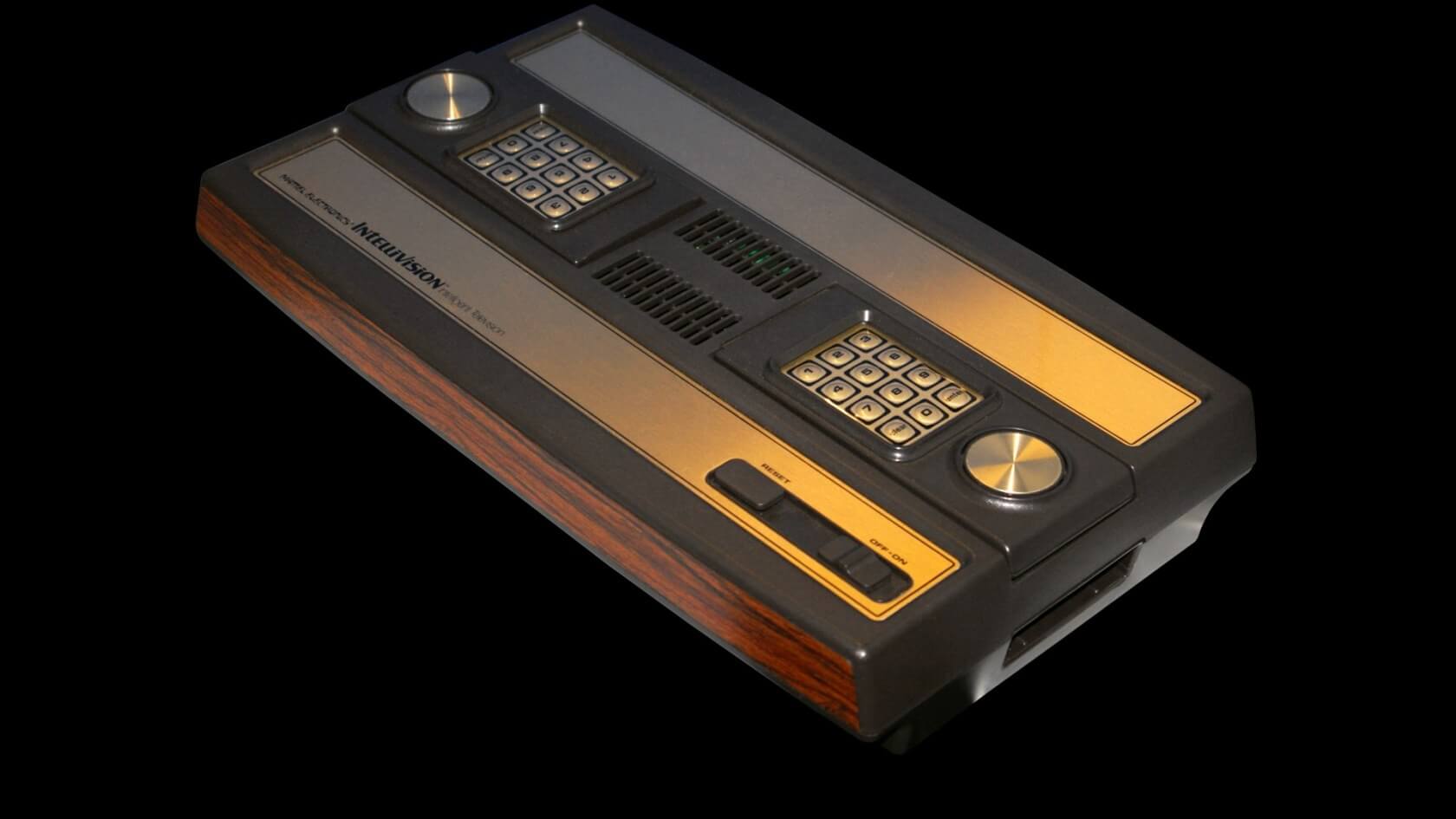
Intellivision For Mac X
Overview
Released in 1998 Intellivision Lives! PC/Mac and Intellivision for PC Volume 2: Doubles Tennis: Sports: Mattel Electronics: Mattel Electronics: 1982 Ray Kaestner It is an updated version of the original Intellivision Tennis with computer controlled players and support for ECS four controllers. Unrelated to Championship Tennis. Fireman: Action. Intellivision was a classic video game system (console) of the 1980s. The games in the Intellipacks and the CD-ROMs are played using a contained Mac PPC application that emulates the code from the original game cartridges. Packs 1 and 2 are dated 1997. Pack 3 is dated 2000.
It’s time to set the way-back machine to the early 1980’s when Reagan was president, MTV was revolutionizing cable TV, and, for a while, the Mattel Intellivision was revolutionizing the home video game market. From Intellivision Productions, Inc (which consists of some of the original Blue Sky Rangers, the original developers of Intellivision games) comes Intellivision Lives!, an emulation of over 50 games and history of the classic console system.
Gameplay, Controls, Interface
At first glance, you might think this CD is simply an emulator for the Intellivision. While this is true, the program also contains a very comprehensive history of the Intellivision, information on the hardware components, software titles, and people that made it all happen in the first place. Intellivision Lives! has a wonderful interface which is easy to move around in. The interface is completely controlled with mouse movement and clicks. In most areas, the left side of the screen shows a picture or graphic of the selected item while the right side will typically give a description of this item. Everything on the CD is broken into a hierarchy of categorized menus (i.e. hardware, software, type of game, instructions, etc.). Many sections of the interface contain videos of interviews or conversations with the Blue Sky Rangers as well as some of the original commercials with George Plimpton touting the Intellivision’s superior capabilities. Overall, there is a ton and a half of information, pictures, videos, etc. on virtually everything that had to do with the Intellivision system.
The emulation portion is nearly flawless. The graphics and most of the sounds are emulated perfectly as far as I can tell (as compared with my real Intellivision I system). Unfortunately, the only sound that isn’t emulated is the Intellivoice speech. While this isn’t emulated, the text does show on screen so you can at least play the games properly. While many (most? all?) of the games are listed in the interface, not all are playable. There are, however, quite a few (over 50) that you can play. The interface gives marketing, development, and most importantly instructions with pictures of the overlays for almost all games listed whether it’s emulated or not. As a classic game collector, I found this to be invaluable for not only the games on the Intellivision Lives! CD, but also for those cartridges I have that are missing the instructions and/or the overlays. There are a wide variety of the emulated games from all the different game networks: Space, Action, Gaming, Sports, etc. In addition, there are several later releases, unreleased, and unfinished games available that you can play too.
For those of you who have held and used an actual Intellivision controller, you may also remember how advanced it was with it’s 16-position directional disc, four action buttons, and 12-button keypad. You may also sympathize with the hand cramps from holding the original controller. Well, this emulator even takes that into account as the keys are spread apart just far enough to give you an uncomfortable feeling not totally unlike that of holding the original controller. I was a little disappointed to see that the keys were not remappable at all as some of the Player Two keys get in the way of using the Player One keys. This emulator does not support any controllers of any kind either so playing two-player games will likely become a game of Twister over the keyboard. As for the controller response, it is equally as good (or bad) as the original Intellivision and is emulated well.
Graphics
By today’s standards, the blocky graphics and single color sprites look downright appalling. But remember, I told you to set the way-back machine. By 1980 standards, these were the hottest graphics you could get on a console system. The amount of detail in the graphics was far greater than the Intellivision’s competition. Also amazing for the time was the incorporation of background graphics in many of the games. All of the games’ graphics are emulated perfectly in every way (I even double-checked this against my real Intellivision to confirm). The graphics in the interface mostly contain scanned images of boxes, overlays, pictures, and memorabilia and are clean and crisp. Most notably, the overlay pictures are large enough to be able to read.

Audio

Again, by today’s standards, the beeps and blips of these games would be enough to discourage a deaf person from playing. Fortunately, you set the way-back machine to 1980 (you did do that, didn’t you?). Like the graphics, the sounds in these games are also emulated perfectly. The only part of the sound I was disappointed by was the lack of emulation for the Intellivoice speech in the games that support it. To compensate, text is shown on screen, but it just isn’t the same. The music in the interface is very nice and soothing. Different pseudo-spacey or 'futuristic' sounding music plays in the background while browsing the interface -- I found this to be a very nice touch to the product.
Documentation
Absolutely incredible! There isn’t much printed documentation other than the install instructions, quick reference diagram for PC and Mac keyboard mapping, and an addenda explaining common problems. The documentation for each game, hardware unit, history, etc. is in the program’s interface as part of the program and is extremely thorough. In fact, from reading this information, you will probably learn more about any single Intellivision product than you ever wanted to know.
System Requirements
Mattel Electronics Intellivision Master Component Unit Model 2609 or Model 5872, um oops, you mean for the emulated games, sorry...
PC Requirements: Pentium 90, Windows 95, 8M RAM, 8X CD-ROM, .
Apple Macintosh Requirements: Power Macintosh, OS 7.5, 100MHz, 16M RAM, 8X CD-ROM.

Reviewed on: Pentium 233MMX, 6.4G HD, 64M SDRAM, Orchid Righteous 3D (w/ 3dfx chipset), Diamond Stealth 3D, Microsoft Sidewinder 3-D joystick.
Bottom Line
This is the best anthology of any classic console gaming system anywhere short of owning a complete collection yourself. If you are a classic gaming fan or collector, this CD is a must have for your library/collection. Even if you just want to learn more about the impact of the Intellivision on the video game market in the early 80’s or to play some great classic games, this CD is the way to go which is why I give it a score of 90.
Intellivision For Pc
A few months ago I had a brilliant idea for a video game: players would control nanotechnology that had been injected into a human body. As the nanotech, you would battle things like disease and infection as they sprang up through the body. You could also repair damaged cells and deliver medicine. It was simple, clever, and 36 years too late.
Microsurgeon, released for the Intellivision system in 1982 was fundamentally built around the same concept. The game was developed and published by Imagic, and designed by Rick Levine (whom I now refer to as the man who stole my idea a few decades before I had it). Levine also worked on Intellivision’s “PBA Bowling” and was one of the five original programmers in the company’s software development group.
A description of the game appeared in the first issue of Numb Thumb News, a short lived publication by Imagic that was intended as a tie-in to the Numb Thumb Club (an Imagic fan club of sorts).Its description gave an idea of gameplay stating, “You navigate the Robot Probe through the patient’s blood stream, outmaneuvering white blood cells that attempt to slow you down. Remove a tumor from the brain, a blood clot from near the heart and much more!”
A loose story was slung over this premise. A toxic gas spill was causing people to fall ill with a variety of immune disorders. As a surgeon at the Xenon Medical Center, your job was to pilot a Robot Probe that would travel through the patient’s body and fight off the effects of the gas.

The game gave players an “x-ray” view of the human body they were operating on, but the term x-ray doesn’t really do it justice. It looked a bit like the cadavers that have been sliced into segments and placed in panes of glass, providing a cross section view of the human body. The effect resembled something that could have leapt from a Hannibal Lecter fever dream.
Microsurgeon received positive reviews when it first came out, and time has remained fairly kind to the game. It appears on several lists of essential titles for the Intellivision. As noted in Danny Goodman’s 1982 review in Creative Computing Video & Arcade Games, the controls were “slow and precise.” The graphics were striking, and though nearly four decades have passed, the game’s concept remains novel (despite my unwitting attempts to rip it off).
Shaun Jex is a lifelong gamer, a journalist, and pop culture historian.His love of video games began with a Commodore 64 he played growing up, late night sessions on his NES, Game Boy and Sega Genesis, and frequent trips to the local Tilt arcade. He edits the Citizens' Advocate newspaper in Coppell, Texas and writes about Disney and Walt Disney World history for Celebrations Magazine and the Celebrations Magazine blog. He runs a weekly vlog called 'The MCP' dedicated to retro video games, and a channel with his wife Kara called 'The Marceline Depot,' dedicated to Disney, amusement parks, and travel.